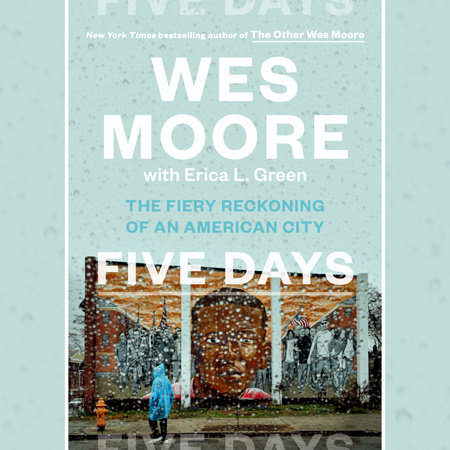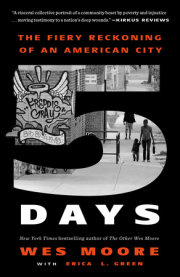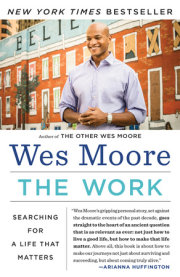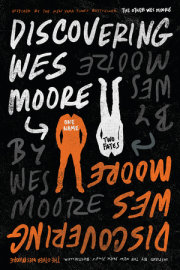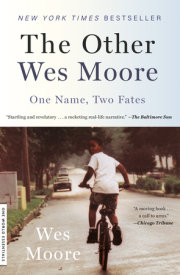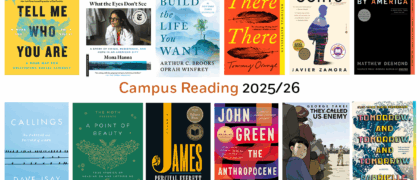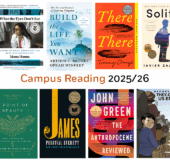Chapter 1Saturday, April 25
Tawanda
Tawanda Jones had been waiting two years to join this march for justice. Well, not exactly this march—it was not for her brother but for another black man from the opposite side of town—but at the end of the day, she decided, any black man is every black man. Freddie Gray’s death a week ago had breathed new life into the cases of others who had come before him, including Tawanda’s brother, Tyrone West.
Two years on from her brother’s death, Tawanda felt like everyone else had forgotten the one thing she knew she’d never get out of her mind: the July day his body had lain on the sidewalk, drenched in pepper spray from the violent arrest the police said he deserved.
There were two unreconcilable sides to the story: what the police said and what she knew in her heart. Their story: Her brother, a black man, large and hostile, had refused to follow orders and then struggled with them. They said that he was dehydrated and had a heart condition and died in the struggle. Her story: Her brother was murdered.
She had been screaming her story into microphones and bullhorns every week for nearly one hundred weeks, in winter and summer, rain and sleet, armed only with posters of her gentle brother’s face, his eyes pleading to the crowd to pay attention. For more than seven hundred days she had been taking her cause to the corners. Sometimes she was with whatever small group she could assemble—family, friends, occasionally strangers with gripes of their own. Sometimes she was alone, shouting into the Baltimore sky.
No justice, No peace.
One man, Unarmed.
Justice for Tyrone West.
She called the protests “West Wednesdays.” It had a ring to it. The news liked catchy slogans. And reporters from all the news outlets were going to be here today.
Tawanda had been asked by Freddie Gray’s family to help lead the protest from Gilmor Homes, the housing project in West Baltimore where Freddie had been arrested, to City Hall. They knew about her commitment not just to her brother but also, beyond her own heartbreak, to the larger cause of addressing police violence and accountability. They respected her—the hours and days she’d already put into this work—and wanted her to stand with them. It was going to be the big protest to cap all the others that had sparked in the last week, ever since the news broke that the twenty-five-year-old would not survive the break in his spine.
She had watched all the shaky cellphone videos of Gray being dragged by the police, and Tawanda felt her soul pierced every time she heard his screams blare from the television—not just in sympathy for Gray but for herself, for she wished she had gotten to hear her brother’s voice, even his screams, in his last seconds. But the videos were followed by a familiar script on the newscasts, one Tawanda recognized too well: Black male. Encounter with police. Dead.
Tawanda had met Freddie’s mother, Gloria, at a protest exactly one week before the big march, while her son still lay in a coma at Shock Trauma. Tawanda was eager to give the Gray family something she had not been afforded after Tyrone’s encounter with the police: hope.
“Don’t give up hope,” she told Freddie’s mother. “He’s going to pull through. I’m going to be praying for your son.”
The following day, a Sunday, Freddie was pronounced dead.
When Tawanda heard the news, she was heartbroken, thinking over and over again about the moment the day before when she’d tried to console Freddie’s mother, and for a moment Gloria had looked into her eyes with a flicker of hope. Tawanda decided then and there to dedicate the next West Wednesday, held outside the Western District Police Station, to Freddie.
There had never been any citywide marches for Tyrone. But after Freddie died, the protests persisted for days, and Tawanda watched as the city was roiled by protesters shouting the very thing she’d been screaming out every Wednesday for two years: that the Baltimore Police Department was the biggest gang in America, with a license to kill with impunity.
In the months and years prior to Freddie’s death, young men with similar profiles had met similar fates. In 2012, Anthony Anderson was walking in his neighborhood on his way to his East Baltimore home when he was confronted by the police, who ordered him to stop moving. He “failed to respond” to commands and was tackled by a police officer. That tackle—or, as the Board of Estimates called it, a “bear-hug maneuver”—left Anthony Anderson’s spleen ruptured and his ribs fractured. The internal bleeding killed him shortly after he arrived at the hospital. Initially investigators said Anderson died because he choked on drugs he was trying to hide from officers, but the medical examiner’s report dismissed that claim, instead pinning the blame on Anthony’s entire body weight slamming onto his neck and collarbone. The Anderson family was awarded $300,000 by the city of Baltimore. Even though the state medical examiner determined that he died by homicide, no officers were charged in his death.
Tyrone West had an altercation with law enforcement after a traffic stop in Northeast Baltimore. He was unarmed, and the state claimed his death was due to the heat of the day and a heart condition. Once again the city and state eventually dispensed of the matter through a civil settlement, paying Tyrone’s three children $1 million. The details of these three cases were different, but they all have one crucial thing in common: despite the six and seven-figure settlements, not a single officer was arrested, indicted, or found guilty of having any responsibility for the death of these unarmed African American boys and men.
The tension between law enforcement and the communities they were sworn to protect and serve had grown palpably thick in Baltimore. For many, the presence of police in the city’s black neighborhoods brought not a sense of peace or security but its opposite. The sound of a siren strikes a different pitch depending on which neighborhood hears it. Still, after the investigations and payouts, most of the community found a way to go on with their lives. Till the next one.
Tawanda didn’t go on with her life. For two years she held a lonely vigil demanding true accountability for her brother’s death. But now everything she’d been saying was being amplified because of another death, and the world was watching. Maybe this time they would listen.
Still, though, all of the time she’d spent protesting, sometimes alone, had left her bruised. There had never been any marches for Tyrone. That still hurt, even as she looked for a good pair of shoes and prepared for the march of her life. She couldn’t deny that part of her felt stung at seeing so many people in the city finally preparing for battle, but on behalf of someone else. For her brother, there had been only a handful of witnesses who seemed to care enough to speak up and speak out.
Of course, there were reasons Freddie’s death was different, that it so quickly turned into a galvanizing moment instead of passing into painful silence like Tyrone’s. Portions of Freddie Gray’s final moments were caught on camera. Capturing video of police encounters is commonplace now, but Freddie’s death in 2015 coincided with the emergence of smartphones and social media as tools of citizen journalism. None of those other victims of police violence had images of their final moments, their bodies laid out on the concrete, broadcast to a global audience. Footage of police killings was starting to show up on people’s social media feeds raw, without being filtered through a controlled media narrative that adopted the police’s point of view and implied that the victims “deserved it.” Our generation would be the first to interact with violent death in this new way—through the same small window in our phones where we watched Eric Garner screaming “I can’t breathe” while an officer straddled his back, yanking him to the ground like a steer, or a young Tamir Rice standing in a park as a squad car pulled up and an officer fired his weapon into the child, ending his life, or Walter Scott in Charleston, South Carolina, being pulled over for a nonfunctioning brake light and soon after being shot in the back while fleeing, contradicting the officers’ sworn testimony. Complaints about violent policing could no longer be treated as folklore or dismissed as exaggerations. “Our word versus yours” is less of a stalemate—where the tie goes to the state—when there is video evidence.
Copyright © 2020 by Wes Moore. All rights reserved. No part of this excerpt may be reproduced or reprinted without permission in writing from the publisher.

